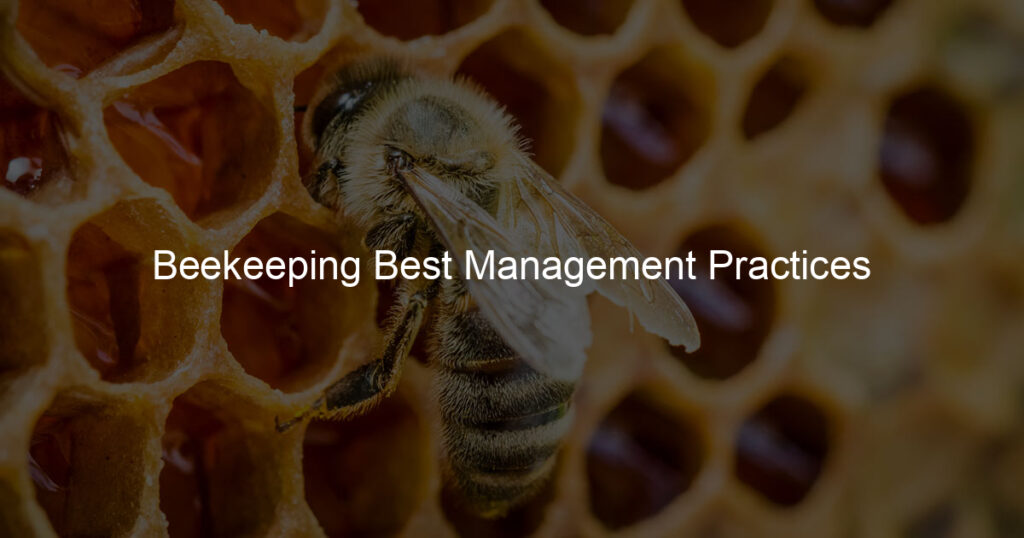Are you interested in beekeeping? There are a few best management practices that can help you keep your bees healthy and productive.
In this blog post, we’ll discuss some of these practices so that you can get the most out of your beekeeping experience. Keep reading to learn more!
What is required for successful beekeeping?
Successful beekeeping requires knowledge, patience, and dedication. Having a basic understanding of the insect’s behavior and environmental needs is key.
Beekeepers need to be able to properly place the hives in an optimal location away from pesticides, traffic, and other potential hazards.
Furthermore, they need to understand what type of products they will be able to harvest or gain from their bees such as honey or bee pollen.
Additionally, beekeepers need to have the right tools for maintaining their hives regularly including smoke pitchers for calming the bees down when collecting honey or inspecting them.
Lastly, successful beekeeping does require some degree of commitment as hives need monitoring year-round with even more attention being paid during summer when the hive population increases significantly.
What are the different techniques for the proper handling of honeybees?
Proper handling of honeybees requires knowledge, skill, and patience. The most important technique is to remain calm in the presence of the bees, as frantic movements can startle them and cause stings.
Other techniques include wearing appropriate beekeeping clothing such as a bee suit, avoiding overworking the bees by making multiple inspections per season, covering swarm traps to control drifting bees, and feeding colonies when they are short of food due to lack of nectar or overcrowding.
Additionally, it is essential to research local laws and regulations before stocking a hive or engaging in any activity related to honeybees. With the right techniques and careful monitoring, anyone with an interest in beekeeping can successfully handle honeybees in their community.
How do you manage bees?
Beekeeping is a noble and fascinating hobby that involves managing the activity of bees within a hive. Beekeepers must practice smart maintenance by researching and understanding the species of bees they’re raising, familiarizing themselves with what these bees need to thrive, and preparing the ideal environment or space in which to keep them.
Additionally, they must be able to respond quickly and appropriately to any issues that arise while the colony is in their care. Properly harvesting honey from the beehive is often a goal for beekeepers, but not all forms of bee management are for this purpose alone; many beekeepers simply prefer to observe and creatively provide for their buzzing charges.
What are the two most important beekeeping tools?
Beekeepers know that many tools go into tending to bees, but two of the most essential are a bee veil and a hive tool. The bee veil is a headpiece with netting clipped over the chin, neck, and shoulder area of the beekeeper. It allows access to hives without getting stung and helps keep the beekeeper safe while they work.
A hive tool is used for different operations in caretaking such as prying apart frames when inspecting a hive. This invaluable multipurpose tool has a flat end and is pointed on one side mimicking a crowbar shape that can be hooked onto frames or cracked cases of honey as well. Both of these items are necessities in beekeeping, although there are many other small items needed too to secure success as a beekeeper.
What is the 7/10 rule in beekeeping?
The 7/10 Rule is an important concept to consider when beekeeping. It simply states that the majority (at least 70%) of a beekeeper’s bees should come from within seven miles, or ten kilometers, of his or her home hive.
The purpose of this rule is to ensure the integrity and health of the bees – wild bees pick up diseases and parasites in their travels, which can devastate existing colonies if they are introduced.
By ensuring most of their bees come from close-by hives, beekeepers are reducing the risk of introducing unknown diseases, as well as preserving the local genetics that may have adapted to environmental conditions near the hive. Ultimately, it leads to stronger and healthier honeybee populations overall!
Final Thoughts
Beekeeping is a valuable and growing industry, but it’s not without its risk potential. By following best management practices, beekeepers can proactively mitigate unforeseen risks, protect their bees and hives, and help make the industry more profitable overall.
Taking the time to become aware of these best management practices and implement them thoughtfully is essential for ensuring that your hive and colony remain as healthy and productive as possible for years to come. Not only does taking care of your bees reward you with delicious, fresh honey; but it also contributes to the preservation of an essential species in our ecosystem.
With the right knowledge and effort, any aspiring beekeeper can reap all the rewards of creating a healthy, happy environment for their bees.








